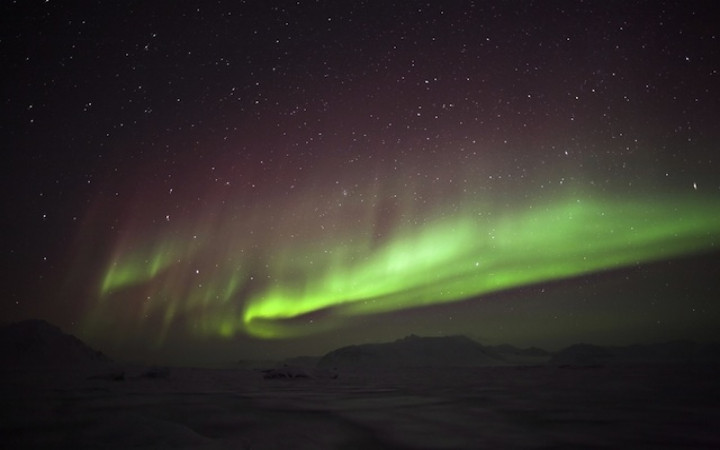Today’s Wonder of the Day was inspired by Holly . Holly Wonders, “What are the northern lights?” Thanks for WONDERing with us, Holly !
Have you ever been to Alaska? How about Norway or Finland? Maybe you’ve traveled to northern Canada or Russia. These are some of the best places to view one of our planet’s most beautiful natural phenomena. What are we talking about? The Northern Lights, of course!
Have you ever seen the Northern Lights? They appear as beautiful, wispy colors waving around in the night sky. Some people compare them to huge curtains of light blowing in the breeze. They’re usually blue or green. However, they can also be red, brown, or purple.
Scientists call these lights auroras. In the Northern Hemisphere, they’re called the Northern Lights or Aurora Borealis. In the Southern Hemisphere, they’re Aurora Australis. In either location, viewers enjoy a bright, colorful light show unlike any other.
What causes an aurora? Just like all natural light on Earth, it comes from the Sun. During solar storms, the Sun gives off a stream of electrified gas. This is full of tiny particles called electrons. When the gas reaches Earth, some of it passes through to our atmosphere.
The electrons then collide with the gases in the Earth’s atmosphere. This causes the beautiful lights we see. What gives auroras their colors? This has to do with the gases they interact with. Colors can also change based on the particles’ altitude. For example, electrons mixing with oxygen less than 150 miles above the Earth’s surface produce green light. When they’re higher than 150 miles, they make red light.
People most often see auroras near the North and South Poles. Why? The lights follow lines of magnetic force. This is also what makes the lights appear to move. By following lines of magnetism, they often seem to dance across the sky.
Throughout history, many people have tried to explain auroras. Some cultures have ancient stories about them. Long ago, people in Alaska, Canada, and Greenland said auroras were fire torches. They thought these torches lit the path to heaven for spirits. Many stories from the Aboriginal people of Australia claim the lights are gods dancing.
Today, we know the science behind auroras. Still, it’s easy to understand why people long held other beliefs about them. Even today, people are transfixed by the Northern Lights. They travel thousands of miles each year hoping to spot them. Have you ever seen an aurora? Many say it’s a magical experience!
Standards: NGSS.ESS1.A, NGSS.PS1.A, NGSS.PS2.B, CCRA.L.3, CCRA.L.6, CCRA.R.1, CCRA.R.2, CCRA.R.4, CCRA.R.10, CCRA.SL.1




